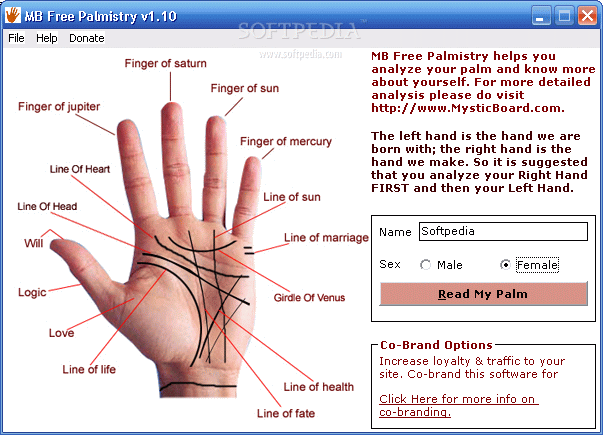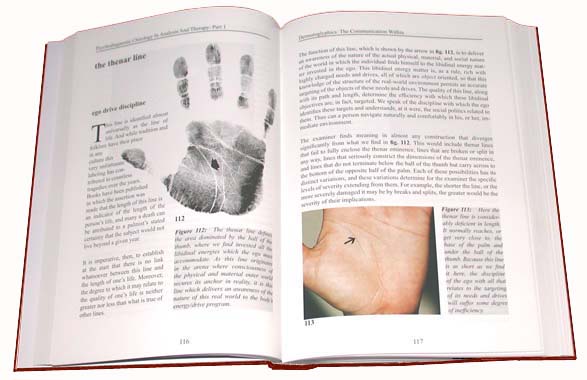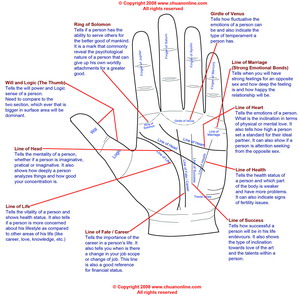"The lines are not written into the human hand without reason; they come from heavenly influences and man’s own individuality." (Aristotle, De coelo et mundi causa)
Palmistry – the art of reading character and life events from the palm lines and hand shape – has a colourful history and has always attracted much interest as a method of ‘fortune telling’.
Much of the mystery stems from the fact that every hand is unique – from the skin ridge patterns that cover the palm and fingertips to the set of crease formations we all know as the palm lines.
Traditional palmists divided the discipline into ‘chirognomy’ (the study of character from the shape of the digits and the palm), and ‘chiromancy’ (the interpretation of the lines, usually for predictive purposes).
Modern palmists study the size, shape, texture and colour of the hands. The length, depth, course and position of the lines are also examined and assessed.
Some palmists consider the nails, knuckles and back of the hand to be an additional source of information.
The emergence of palmistry in the last 70 years as a serious study has largely been due to the introduction of scientific methods, and the efforts of researchers to establish links between skin patterns and disease.
Science has discovered that palm lines and skin ridge patterns are formed in the womb, appearing on the hand by the fifth month of foetal development.
A psychological approach to interpreting character from the hand has also evolved over the last century. Many modern palmists now call themselves hand analysts.
Modern palmists recognise that the lines on the hand can alter over time and these developments reflect changes that we have made to our attitude, health or lifestyle.
Few people now believe that the hands reflect an unchangeable destiny for their owner.
In turn, the attitude of palmists to ‘prediction’ has altered. They now look at the hand in terms of future possibilities and encourage clients to be more self-determining.
A good palmist will look at hand shape, the fingers, major lines and fingerprints to become acquainted with a client’s character, needs, motivations and methods.
Through this assessment, he or she can ‘predict’ by understanding their client’s reactions to past events and anticipating the responses to new life challenges.
Our hands are registers of past experiences, as well as living symbols of our lives and attitudes in the present.
Hands show who we are at this moment in our lives, and how our combined actions and reactions in the past have led to us being the person we are now.
With a sound knowledge of hand reading, we can recognise hidden talents and understand where our strengths lie, diagnose recurring themes in relationships, and pinpoint our expectations of others.
By interpreting the language of the hand, we have an immediate ‘aerial view’ of our journey in life: a road map of our individual life path.
Palmistry can zoom in on the important aspects of our travel, make us aware of alternative routes, and prepare us for the exciting road ahead.
Frank Clifford










